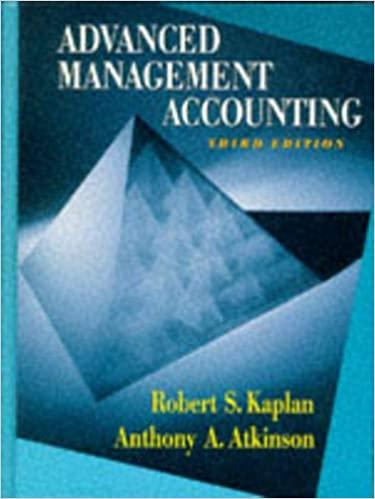lndividu????l Rewards versus Group Rewards Lake Erie Steel Products Limited is a large integrated steel-products firm producing
Question:
lndividu????l Rewards versus Group Rewards Lake Erie Steel Products Limited is a large integrated steel-products firm producing a full line of steel products that are sold internationally.
The company is organized on a profit center basis, with the major primary profit centers being the coal-mining operations, the iron ore-mining operations, and the scrap steel operations. The major manufacturing profit centers are hot-rolled products, coldrolled products, and shaped products. The major finishing profit centers are fastener products, tube products, and specialty products.
The company has implemented a market-based transfer pricing system for every product that has a well-organized external market. This segment accounts for about 75%
of the transfers that take place between the profit centers. The balance of transferred products are priced using a transfer price that consist!l of fixed fee plus standard variable cost.
The transfer pricing system is used to evaluate profit center performance along two dimensions. First, the profit center's controllable margin is used as an assessment of the performance of the manager. Second, the profit center's profit is used to evaluate the ongoing decision to continue the operations of the profit center or to abandon the profit center.
All the employees in the organization except the chairman, president, and vice presidents participate in the corporate profit-sharing plan. (The excepted individuals participate in a stock option plan and a bonus system that focuses on accomplishing strategic performance objectives.) The pool available for bonuses is based on corporate earnings and equals I 0% of all corporate earnings in excess of the target level of earnings that is es· tablished for any particular year.
The senior management committee evaluates the performance of each profit center relative to its financial and operating goals. The overall performance of the profit center is rated as poor, acceptable, or outstanding. Performance values of 0, 0.25, and I are assigned to each of these qualitative ratings, respectively. Therefore, an overall profit center performance that is rated as acceptable is assigned a performance value of 0.25.
Next, the employee's supervisor rates the individual performance of each employee.
(In the case of the profit center manager, the evaluation is done by the vice president to whom the manager reports.) The employee's performance is evaluated relative to the objectives that the employee and his supervisor established for each job. There are, by design, exactly four attributes of each employee's job that are measured and evaluated.
None of the four attributes is a financial measurement. The overall performance of the employee is rated as poor, acceptable, or outstanding and is assigned the.corresponding performance value of 0, 0.25, or 1, respectively.
The following sequence of calculations is then undertaken:
1. Sum the employee's profit center perfonnance rating and the individual's personal performance rating to determine the employee's aggregate performance measure.
2. Multiply each employee's aggregate perfonnance measure by the employee's wages to detennine the employee's weighted wages.
3. Sum the weighted wages of all the employees who are participants in the profit-sharing plan to compute a sum of weighted wages.
4. Divide the bonus pool available by the sum of weighted wages to determine the bonus per dollar of weighted wage.
S. Detennine each employee's bonus by multiplying the employee's weighted wage by the bonus per dollar of weighted wage.
This calculation had resulted, on average, of bonuses of 18% of wages to be paid during the last five years.
Required Evaluate this incentive scheme, discussing your impressions of its positive and negative aspects.
Step by Step Answer:

Advanced Management Accounting
ISBN: 9780132622882
3rd Edition
Authors: Robert S. Kaplan, Anthony A. Atkinson, Kaplan And Atkinson





